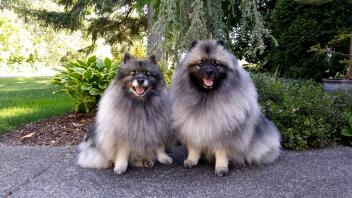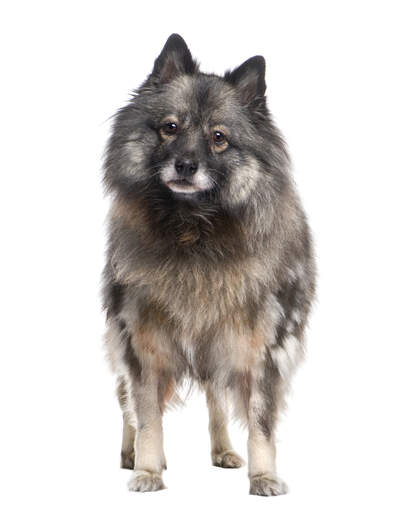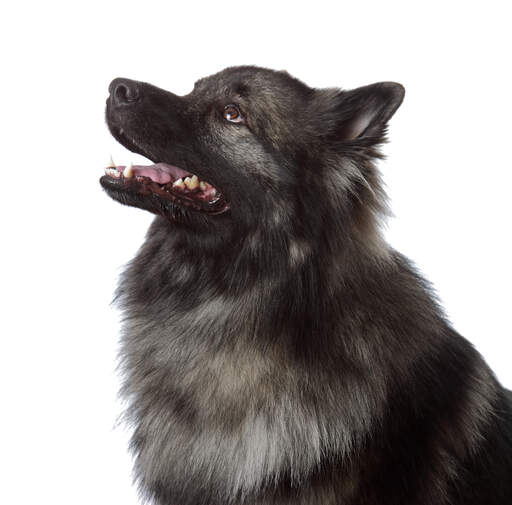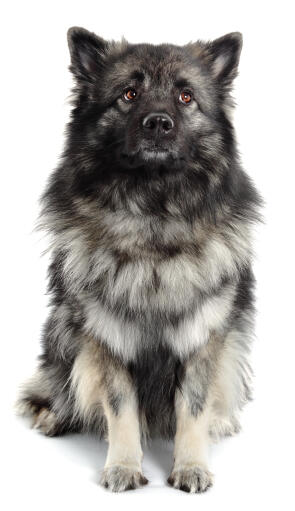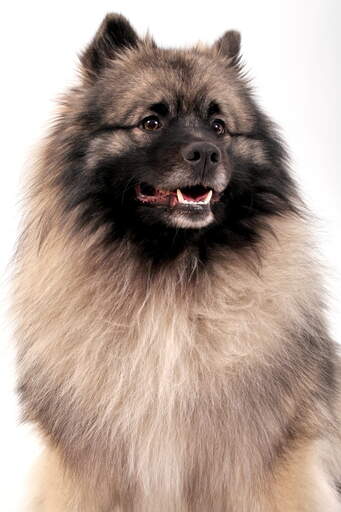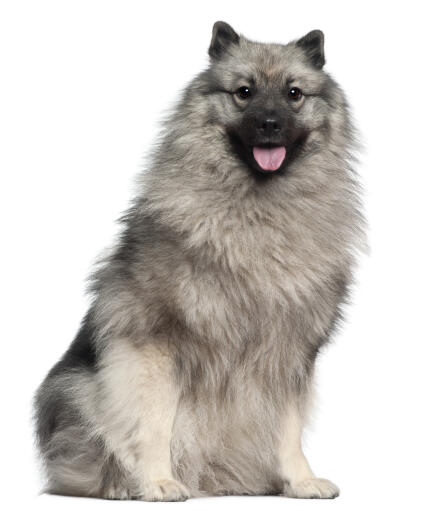Keeshond Dogs





History
Of Dutch origin, the Keeshond dates back to before the 17th century. They are also sometimes called the “Dutch Barge Dog” as they were commonly kept by barge owners that traveled the country's waterways, rivers and canals. They were bred solely as companion dogs. They are related to the Finnish Spitz, the Chow and Pomeranian. They are Holland's most beloved dog, but a rare sight outside of Europe.
Behaviour
Keeshonds are playful, alert and active, and were bred as friendly companion dogs. They are friendly towards everyone, if properly socialized. Barking can become a problem if the dog is not trained early on. Keeshonds get on well with other dogs and pets. They are quick to learn, and love to please their owners. They respond best to firm, affectionate training and do not learn well if harsh words or actions are used against them. They are extraverts and can be mischievous if bored. They don't like to be left alone for long periods and can be destructive in such circumstances, suffering separation anxiety. They will need early if they are to be left alone for short periods, and are best suited to households where someone is home for most of the day.
Keeshonden can "get under your feet", as they are like shadows and will follow you everywhere. They excel in obedience and agility classes/competitions and rank high on the dog intelligence list. Their joy for life is infectious and they love showing off, but they can also develop bad habits such as digging in the garden or chewing shoes/furniture. This needs to be stopped quickly with firmn, friendly training.
Keeshonds (sometimes written in the German way, as "Keeshonden "), are affectionate and are often used as therapy dogs. They have been trained as Guide Dogs for the Blind too, but their small size prevents them being used more widely. They are active dogs and need regular walks; they can play for hours. They need at least one long walk a day. They are generally responsive to their owners call and recall is not usually a problem. Due to their thick coat, they get hot and bothered very quickly in hot weather and will head for the shade in these conditions. They love water, whether it's arriver or a garden paddling pool! They shed hair constantly, especially during the twice-a-year moult. Daily brushing will prevent fur from covering your carpet and furniture. They are clean dogs, though, and rarely need a bath - also, they don't really get that "doggy" smell, which is a bonus!
Temperament
The Keeshond is a playful, alert and active dog, loyal to their family. They are very good with children. They will alert you of strangers with a loud bark, but are friendly with anyone they meet.
Moderate daily exercise will keep these dogs happy, and the Keeshond will get on with children and other pets. Don't expect them to be a guard dog, though, as any bark they make is usually more welcoming than alarming!
Health Problems
Keeshonden are generally healthy, but may suffer Canine Hip Dysplasia, cataracts, epilepsy, Addison's Disease, elbow dysplasia, luxating patella (dislocation of the knee cap), eye problems, and skin problems.
Breed Details
- Status: Common
- Life Expectancy: 12 - 15 years
- Weight: 14 - 18 kg
- Height: 17 - 18"
- Rare: No
- Coat: Medium
- Grooming Requirements: Everyday
- Town or Country: Either
- Minimum Home Size: Small House
- Minimum Garden Size: Small to Medium Garden
- Breed Type: Companion Dog
- Size: Medium
- Energy Level: Medium
- Exercise Required: Up to 1 hour
Keeshond Pictures
